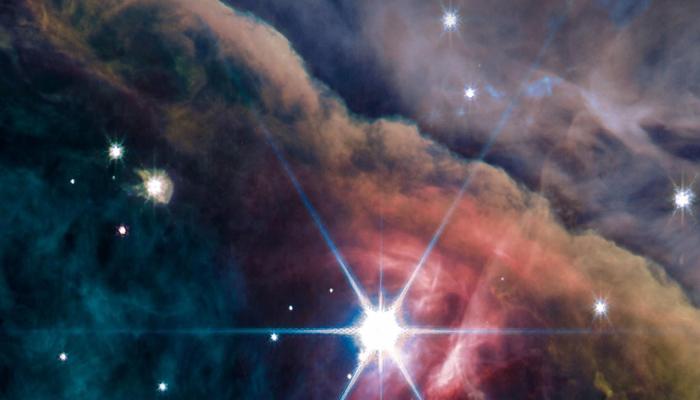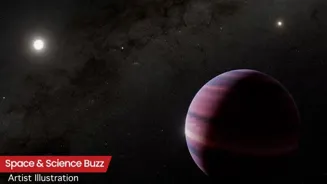Unveiling Astrobiology: Exploring Life Beyond Earth. Dive into the cosmos' mysteries and our search for extraterrestrial life!
For centuries, humankind has gazed at the stars and wondered: are we alone?
This simple yet profound question fuels the field of astrobiology, a fascinating interdisciplinary science dedicated to understanding the potential for life beyond Earth.

Astrobiology isn't just about little green men; it’s a rigorous scientific pursuit that blends biology, chemistry, physics, geology, and astronomy to explore the conditions necessary for life to arise, evolve, and thrive in the cosmos.
From studying extreme environments on our own planet to probing distant exoplanets, astrobiologists are pushing the boundaries of knowledge and revolutionizing our understanding of life itself.
The potential discovery of even microbial life elsewhere would have a monumental impact, reshaping our place in the universe and challenging our assumptions about the very nature of existence.
Astrobiology's foundation relies on key ingredients for life, open to alternative chemistries
Astrobiology's foundation rests on the principle that life, as we know it, requires certain fundamental ingredients. Liquid water is considered essential. It acts as a solvent, facilitating chemical reactions and transporting nutrients.

A source of energy, such as sunlight or chemical reactions, is vital to power metabolic processes which allows organisms to grow and reproduce. Carbon is crucial, given that it forms the backbone of complex organic molecules.
While this represents our current best understanding, astrobiologists are also open to the possibility of life based on alternative chemistries, perhaps utilizing silicon instead of carbon or employing different solvent systems.
This flexibility is key to searching for life in environments dramatically different from our own.
Search for extraterrestrial life via extremophiles on Earth
The search for extraterrestrial life begins right here on Earth. Our planet hosts a remarkable diversity of life, including extremophiles. These organisms thrive in some of the most inhospitable places imaginable: volcanic vents, frozen deserts, and highly acidic or alkaline environments.
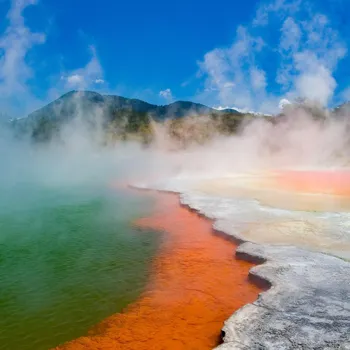
Studying extremophiles provides valuable insights into the limits of life's adaptability and helps us identify potential habitats on other planets or moons.
For instance, the discovery of microbes living deep within the Earth's crust suggests that subsurface environments on Mars or Europa could potentially harbor life.
Similarly, organisms that can withstand high levels of radiation indicate that life might be able to persist even on planets exposed to intense space weather conditions.
By understanding how life survives in these extreme conditions on Earth, scientists can make informed predictions about the types of environments that might support life elsewhere.
Exploration of Mars for signs of life through missions & sample analysis
The exploration of Mars has been a central focus in the search for extraterrestrial life. Numerous missions, including rovers like Curiosity and Perseverance, have been sent to the Red Planet to analyze its geology, chemistry, and potential for past or present habitability.
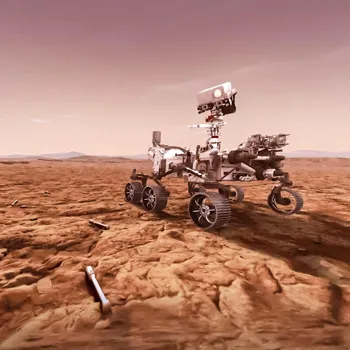
These missions have found evidence of ancient rivers, lakes, and even oceans on Mars, suggesting that it was once a much warmer and wetter planet than it is today.
Perseverance is currently collecting samples of Martian rock and soil, which will eventually be returned to Earth for detailed analysis. These samples could contain biosignatures, indicators of past life, offering clues of life on Mars.
Future missions are planned to further investigate potential habitats, such as subsurface ice deposits and underground caves, which may provide refuge for life from the harsh conditions on the surface.
Exploring icy moons for potential life beyond Mars
Beyond Mars, the icy moons of Jupiter and Saturn are considered promising targets in the search for life. Europa, Enceladus, and Titan are thought to harbor subsurface oceans, which could provide the necessary conditions for life to arise.
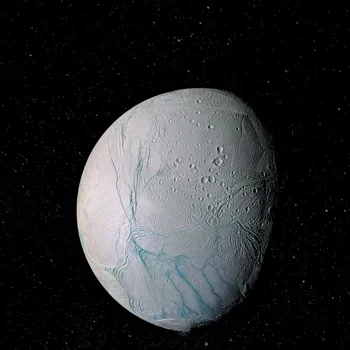
Europa's ocean is believed to be in contact with a rocky mantle, which could provide chemical energy for life.
Enceladus has geysers that erupt from its south pole, spraying water ice and organic molecules into space, providing scientists with a way to sample its ocean without having to drill through the ice.
Titan, with its thick atmosphere and methane lakes, is a unique world that could potentially support exotic forms of life. Future missions are being planned to explore these moons and investigate their potential for habitability and life.
These missions will likely involve robotic probes that can land on the surfaces of these moons, drill through the ice, and explore their subsurface oceans.
Discovery of exoplanets fuels search for alien life
The discovery of exoplanets, planets orbiting stars other than our Sun, has revolutionized astrobiology.

Thousands of exoplanets have been discovered in recent years, including many that are similar in size and composition to Earth and reside in the habitable zones of their stars, where liquid water could exist on their surfaces.
Scientists are using telescopes to study the atmospheres of these exoplanets, searching for biosignatures, such as oxygen, methane, or other gases that could indicate the presence of life. Finding such biosignatures would be a major step toward detecting life beyond Earth.
The James Webb Space Telescope, with its advanced capabilities, is playing a key role in this search, allowing scientists to study the atmospheres of exoplanets in greater detail than ever before.
The search for life in the universe is a grand scientific endeavor that requires international collaboration, cutting-edge technology, and a willingness to explore the unknown.
